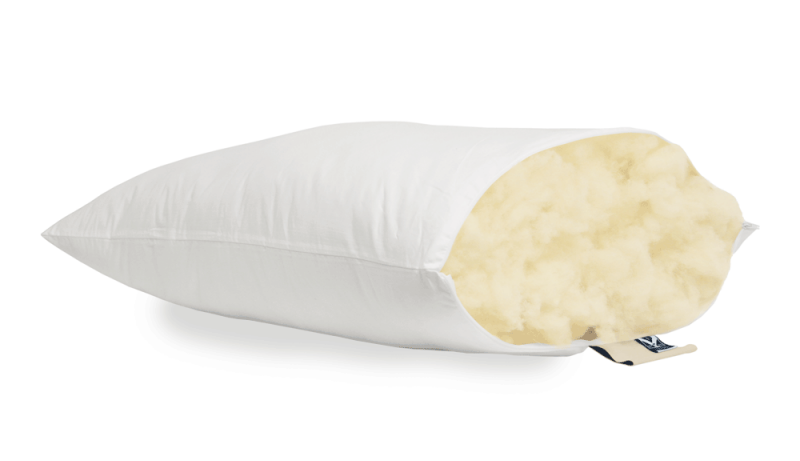5 sustainable ways to recycle your old pillow

Most experts recommend replacing your pillows every 1 – 2 years, but this will depend on the filling. Pillows made with synthetic fibres are not breathable so will trap sweat, therefore are likely to require frequent washing and/or replacing. They also have been proven in recent studies, carried out in the UK, to accumulate dust mite allergens at a higher rate than feathers or down - another filling type that attracts dust mites, and is well known to be generally unsuitable for those who react to the allergens associated with these tiny creatures. We all may feel a bit squeamish about the thought, but after 1 – 2 years, a large proportion of the weight of synthetic and feather pillows is due to dust mites and their droppings.
Wool pillows - and particularly those where the wool has not been chemically treated - are breathable and moisture wicking and are therefore more hygienic. They are also dust mite resistant so the ideal choice for those whose allergies are made worse by dust mite allergens. In terms of cleaning, regular airing (preferably outdoors when the weather is dry) will help to keep the wool filling nice and fresh.
How can I be more sustainable when replacing my old pillow?
When the time does to come to replacing your pillow, if you already have a wool pillow, then wool is a sustainable filling, especially when it is natural and has not been washed or treated with chemicals or bleach. If the pillow casing is made from 100% cotton, then that is a sustainable fibre too. There are number of ways you can recycle or reuse your wool pillow when the time comes to replacing it.
If you don’t have a wool pillow, we’ve listed some other suggestions that are suitable for recycling pillows made with other fillings – and do consider replacing them with a wool pillow. Discover our 100% British made, 100% British wool pillows, individually handcrafted by our seamstresses in our Devon workshops. They’re chemical free too!
Compost your old wool pillow
Remove the wool from the cotton casing and put it in your compost bin. Alternatively, you can use the wool to line raised beds, or vegetable trenches. The wool is full of nutrients, which it will release into the soil as it breaks down. During the spring and early summer, you can leave some tufts, tucked into hedges or trees in your garden and birds will use it as nesting material. The cotton casing can be cut up and used as cleaning cloths.


The rest of these tips will work for pillows with other fillings, as well as for those filled with wool.
Fill up throw pillows, floor cushions and poufs
Stuff old flat pillows into a patterned large square pillowcase or cushion cover, plump it up and add to your sofa, an armchair or bed.
Create a garden knee pad
Add a waterproof cover to an old pillow (or two pillows if you have bad knees) and use to help make gardening easier – or use for outdoor relaxation.
Make a door draft stopper
Remove the filling and turn the case into a long tube, stuff it with the filling and use it to block drafts to help make your home more energy efficient. You can always stitch another layer of fabric over the top if you want something with a pattern or motif to match your décor.
Craft away
Old pillow fillings can be used for all sorts of craft projects, such as stuffed toy animals, stuffed keyrings, or craft style decorations for Easter, Christmas or other festivities. Your pillow’s fabric casing can be cut up and used for cleaning around the house.
If you have any questions about which of our 100% British wool pillows might be the most suited to your needs, then please get in touch with the team and we’ll be happy to talk through the options available.


